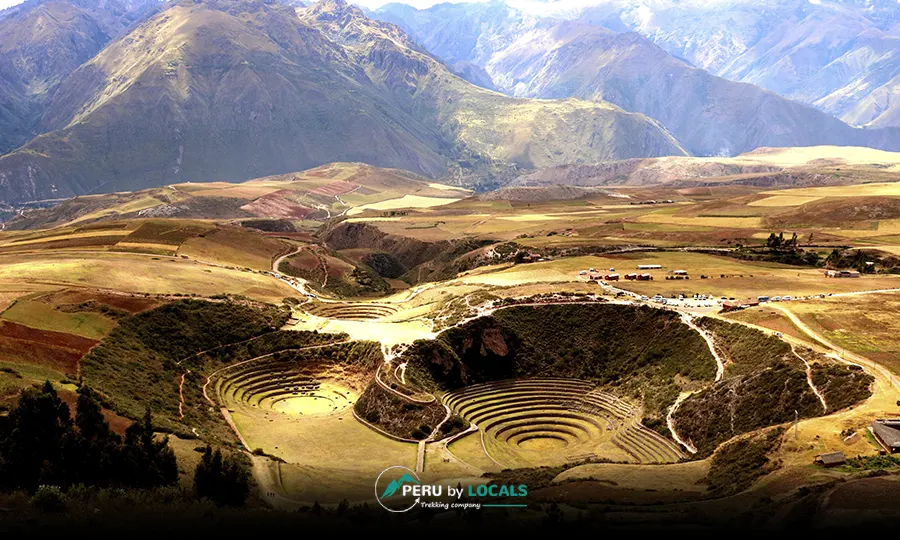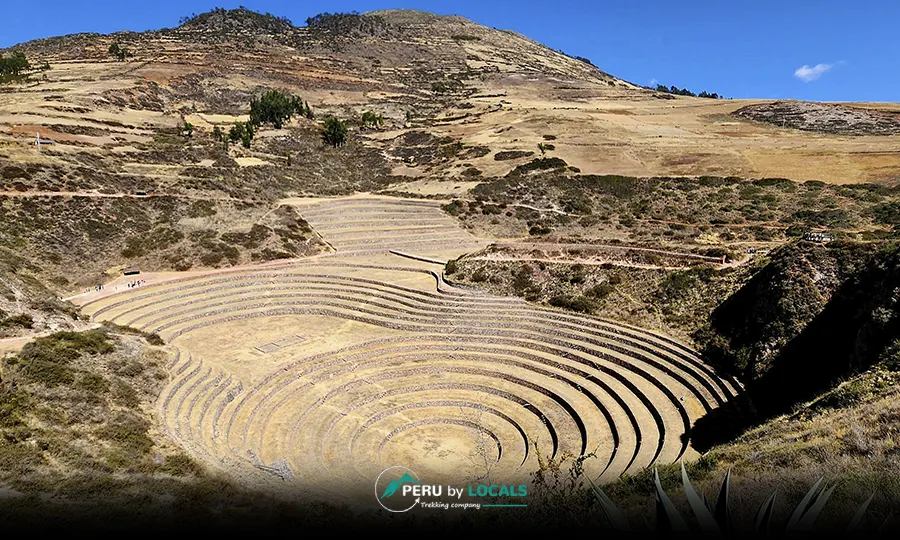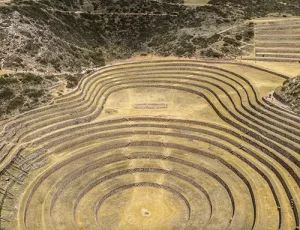Moray: Complete Visitor’s Guide

Ruins of Moray
Located in the stunning Sacred Valley of Peru, Moray is one of the most intriguing Inca sites. Its complex and mysterious terraces have fascinated archaeologists, travelers, and historians for centuries. This guide will delve into the history of Moray, the theories behind its purpose, and how to make the most of your visit to this extraordinary site.
Introduction to the Ruins of Moray
Perched in the highlands of Peru, the Ruins of Moray are a set of ancient terraced structures that form part of the archaeological wonders of the Sacred Valley. The site consists of three groups of circular terraces known as “muyus,” each descending 490 feet (150 meters). The largest of these terraces has a diameter of about 600 feet, and they are surrounded by the towering Andes mountains, making the site both awe-inspiring and enigmatic.
Theories Behind the Purpose of Moray
The purpose of the Moray ruins has long been debated among scholars. Due to the lack of written records from the Inca civilization, the site remains a mystery. However, four main theories have emerged over the years:
Agricultural Research
One of the most widely accepted theories is that Moray was an experimental agricultural site. In the 1970s, anthropologist John Earls proposed that the Inca used Moray to create microclimates for testing different crops. The terraces, which are designed to capture varying amounts of sunlight, could have been used to study the effects of temperature and altitude on crop growth.
Inca Ceremonial Center
Another theory suggests that Moray was used for ceremonial purposes. Local legends recount that the site was the venue for rituals and celebrations. Some locals continue to gather at Moray each year in October to celebrate Moray Raymi, a traditional festival. Despite this, it is unlikely that the site was solely used for religious ceremonies due to its remote location.
Open Pit Mine
Some believe that the site was once an open-pit mine. This theory posits that the site was used to extract minerals, which were later covered by terraces and repurposed for agricultural and ceremonial purposes.
Alien Landing Site
A more unconventional theory suggests that the circular depressions at Moray are not of human origin but rather the result of an alien landing. This theory, while speculative, adds to the air of mystery surrounding the site.
History of Moray
The origins of Moray are still not entirely clear. Excavations at the site suggest that it may have been built by a culture predating the Incas, possibly the Wari civilization. However, the Inca Empire, during its peak, expanded and developed the complex we see today between the 12th and mid-14th centuries. Today, Moray is often included in Sacred Valley Vip itineraries, offering visitors a luxurious and exclusive way to explore this remarkable enclave.
Moray remained largely forgotten by the outside world until the 1930s when aerial expeditions brought it to the attention of researchers. The site was used by local communities, such as the Misminay, for farming until the 1970s when it was protected by Peru’s National Institute of Culture and opened for tourism.
What to See at Moray
When visiting Moray, there are several key features to explore:
- The terraces: The circular terraces that descend from the top to the bottom, creating a dramatic landscape.
- The varying temperatures: As you descend through the terraces, you’ll feel a noticeable temperature difference, which adds to the site’s mystique.
- The surrounding scenery: The Andean peaks surrounding Moray offer stunning views and a perfect backdrop for your exploration.
The Best Time to Visit Moray

Visit Moray
The best time to visit Moray is during the dry season, which lasts from April to October. This period offers clear skies and pleasant weather, making it ideal for outdoor activities like biking or horseback riding. The rainy season from November to March can bring heavier rains, but the landscapes are lush and green, providing a different kind of beauty.
Weather and Altitude Considerations
Moray sits at an elevation of 11,500 feet (3,500 meters) above sea level. While this is similar to Cusco’s altitude, visitors may experience some symptoms of altitude sickness. To adjust to the altitude, it’s advisable to spend a few days in the Sacred Valley before visiting Moray, as the altitude there is slightly lower. Drinking plenty of water, eating light meals, and sipping on coca tea are also helpful strategies for acclimatization.
How to Get to Moray
Moray is located 33 miles (53 km) from Cusco, and it is accessible via a day trip. The road from Cusco to Moray runs through the Sacred Valley, passing by towns like Urubamba. You can visit Moray independently, or you can book a guided tour from Cusco or the Sacred Valley, which typically includes transportation, a guide, and a stop at the nearby Maras Salt Mines.
Additional Attractions Near Moray
Moray is close to several other fascinating attractions that are worth visiting during your trip:
- Maras Salt Mines: Just a short distance from Moray, the Maras Salt Mines feature over 3,000 salt ponds, which have been used since Inca times. Visitors can explore the ponds and learn about the traditional salt production process.
- Maras Town: A small, charming town that gives visitors a glimpse into rural life in the Sacred Valley. Maras is known for its colonial architecture and its connection to the salt mines.
- Chinchero: This Andean town is known for its traditional weaving and vibrant market. It’s a great place to shop for local crafts and textiles.
What to Bring on Your Visit to Moray
To ensure a comfortable and enjoyable visit, don’t forget to bring:
- Your Cusco Tourist Ticket (required for entry to Moray)
- Bottled water and snacks
- Comfortable walking shoes
- A camera to capture the stunning views
- Money for souvenirs
- Sun protection (hat, glasses, sunscreen)
- A waterproof jacket or rain poncho, especially during the rainy season
Conclusion
Moray is a must-see destination for anyone visiting Peru. Whether you’re drawn by its stunning terraces, its agricultural history, or its fascinating mystery, the Ruins of Moray offer something for everyone. By visiting this incredible site, you’ll gain insight into the ingenuity of the Inca Empire and its deep connection to the land.
If you’re planning a trip to Peru, don’t miss out on this archaeological wonder. Peru by Locals offers personalized tours to Moray, ensuring you experience the site’s history and beauty to the fullest. Let us guide you on a journey through the Sacred Valley and beyond!














